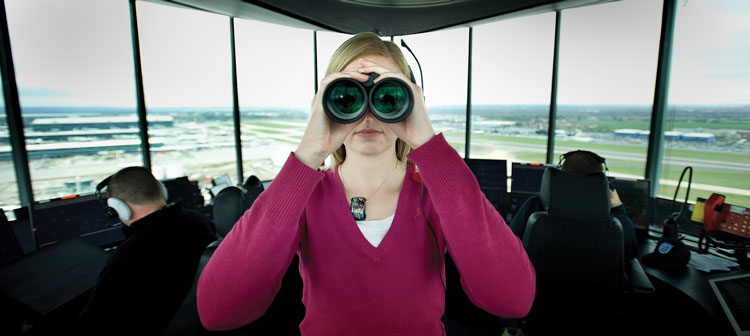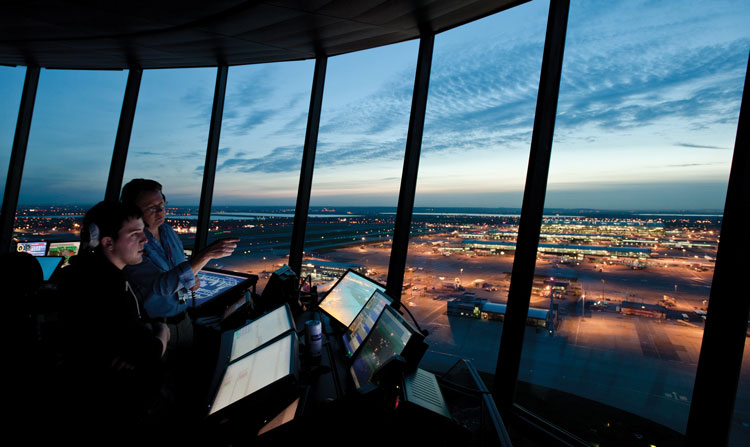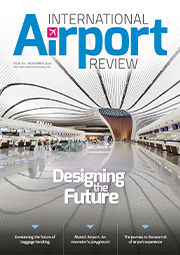Europe and the future of air traffic management
- Like
- Digg
- Del
- Tumblr
- VKontakte
- Buffer
- Love This
- Odnoklassniki
- Meneame
- Blogger
- Amazon
- Yahoo Mail
- Gmail
- AOL
- Newsvine
- HackerNews
- Evernote
- MySpace
- Mail.ru
- Viadeo
- Line
- Comments
- Yummly
- SMS
- Viber
- Telegram
- Subscribe
- Skype
- Facebook Messenger
- Kakao
- LiveJournal
- Yammer
- Edgar
- Fintel
- Mix
- Instapaper
- Copy Link
Posted: 16 February 2015 | Richard Deakin
Richard Deakin, CEO of NATS looks at the efficiency improvements that can be achieved by the Single European Sky (SES) initiative and the challenges to its adoption.


There has been a lot of activity in the European Union over the last few months, culminating in the confirmation of Jean-Claude Juncker’s new Commission. The Commission has indicated that they plan to review the effectiveness of existing legislation before introducing anything new, which I think has to be a good move. They could do worse than looking at the Single European Sky (SES) initiative.
Most of us in the aviation industry know that SES has the potential to deliver significant benefits to airports and airspace users – improved environmental performance, better use of our limited airspace capacity, cost reductions, enhanced safety – but progress to date has been painfully slow.
The Commission likes to compare Europe and the US to demonstrate how inefficient European air traffic management is. Yes, the US may appear to maintain a similar service for half the price, yes, they handle more traffic with fewer people, but they also have significantly higher levels of delay. In the US last year, 92 million system delay minutes are estimated to have resulted in $7.2 billion in direct additional costs to airlines – not something I suspect customers of European airspace would like to see mirrored here.
What that comparison does illustrate however is that this is a complex subject that isn’t just about price. Good service does cost money, but I still think there are huge efficiencies to be found in Europe. There are huge opportunities to collaborate and change the way Air Navigation Service Providers (ANSPs) do things to better serve our customers – both the airlines and airports.
And I think it’s vital we do this. Europe’s aviation industry has traditionally been very strong, but we are being challenged. Growth in both the Middle East and Asia Pacific over the last few years has been huge and they are emerging as major forces in global aviation. Since 2004, EU airport hubs have lost 10% of their market share on indirect connections out of Europe and have fallen behind the Gulf hubs in terms of intercontinental connectivity.
And yet many people don’t see any need for change. Airspace users are able to get from gate to gate safely and generally with fairly low delays. However, we can’t accept that this is enough. If we want Europe’s aviation industry and its economy to thrive then we have to do more.
Efficiency through unity
Today’s model of air traffic service provision within Europe sees 28 states (in the European Union – this increases to 40 if we widen it to Eurocontrol members), with at least 28 ANSPs and 28 safety regulators. This means that the costs associated with an ANSP and a regulator are replicated 28 times. It’s no surprise that the costs of air traffic services within the United States are half those in Europe. We have to find a way to change this and in my view this requires collaboration – both within the ANSP community and beyond with airlines and airports.
And this is exactly what the Single European Sky is all about – breaking down artificial barriers in the sky to enable Europe’s aviation industry and the wider economy to flourish. The European Commission has gone about this through the creation of functional airspace blocks, or FABs. While their motives are sound, I remain thoroughly unconvinced that state-led solutions that require political agreement will deliver the change required. That’s why I think it’s vital that we deliver change through other means. When the airline industry needed to cut its costs it looked to collaborate, even with competitors. It set up voluntary alliances such as STAR and One World to deliver efficiencies for the benefit of both them and ultimately their customers.
We have made a start on doing this; the Borealis Alliance brings together nine northern European ANSPs, including NATS and seeks to deliver these efficiencies through voluntary business collaboration. I have recently taken over the chairmanship of the group and we shall be pushing forward with a plan to introduce free route airspace across all of northern Europe.
Growing pains for ANSPs
However beyond these examples overall progress to date has frankly been limited. Many ANSPs are yet to truly grasp the need for change and this is making them reluctant to do things differently. This may be uncomfortable. It forces ANSPs to think about our customers – the airlines and airports – and put them at the heart of what we do, over and above politics. It may even require us to make some unpopular decisions.
But ANSPs need to do it. Doing things the way we’ve already done them isn’t an option. And if we don’t take control of the situation ourselves, the European Commission will continue to regulate how we operate, telling us what to implement and when, how much to reduce our costs and what to do to improve environmental performance. We know the things that need to change but it’s time for ANSPs to stand up and deliver. We need to take control and we need to drive the change that is required, not wait for it to be imposed on us.


We need to take this model beyond the boundaries of the ANSP community too. The SESAR Joint Undertaking was a good start, bringing together a wide range of stakeholders from Europe’s aviation industry to develop the concepts and technologies needed to modernise Europe’s airspace. We hope to build on that in the next phase of SESAR. I’m delighted to say our ground breaking joint bid with a number of other ANSPs, airlines and airports to become SESAR Deployment Manager has been a success. The Deployment Manager will have a pivotal role in ensuring that SESAR concepts are rolled out in a synchronised way across Europe and are prioritised based on the benefits they will deliver.
It will see ANSPs, airports and airlines working together to oversee €3 billion of funds in the coming years to help ensure SESAR concepts become reality, and shows the emerging recognition of the value of working together as an industry to move forward.
What does all of this mean for the future of air traffic management? Beyond the need to collaborate, the pressure from our customers to reduce costs will not abate and as the Single European Sky Performance Scheme continues to demand greater cost efficiencies, ANSPs have to find new ways to do things. As a result I believe we will see more competition. The European Commission cites the aviation industry as one of the success stories of liberalisation in the transport sector, however to date air traffic services have largely been excluded from the mix.
The case for competition
One of the areas where there is greatest scope for reform to achieve this is in Terminal Air Navigation Services (TANS) – the services provided by ANSPs in and around airports. It is argued by some industry commentators that the provision of ATM is a natural monopoly and that the ‘market’ is best served by having only a single supplier.
Those commentators are wrong. I believe strongly that TANS is not a natural monopoly and that airports should be able to exercise more choice over who provides the service to them. With thousands of airports in Europe there should be room for a large number of service providers, all competing to offer the best solution for an individual airport’s needs helping to drive down costs, improve customer focus and deliver innovations in the market.
However, most countries in Europe have not allowed competition in the provision of air traffic services, or have only allowed it to a limited extent. For example, in Spain and Germany there is some competition but it excludes the major airports where the greatest benefits, particularly in terms of the Single European Sky objectives, could be delivered. In contrast, the UK allows competition even at the largest London airports.
Unfortunately, this absence of competition in most countries leaves the vast majority of providers in Europe with little incentive to innovate and deliver value to their customers. This is unnecessarily restricting customer choice and acting as a barrier to progress in delivering a Single European Sky. In a competitive environment, customers would be empowered to choose the provider that can best meet their needs. This would work to deliver the objectives of SES, with airports choosing the provider that can deliver a safe service and the right balance for them, in terms of reducing fuel burn, minimising delay, optimising the number of aircraft using their runways and delivering cost savings.
Evidence to date suggests that where markets have been opened, benefits are being delivered in line with the objectives of the Single European Sky. In the UK, where we have a number of suppliers and the world’s busiest single and dual-runway airports, the cost of TANS will be the third lowest in Europe by 2019. In Spain, where a competitive process for a number of airport towers was launched, services at nine regional towers are now being provided for half the price of the previous regulated regime.
Unfortunately, this approach is the exception rather than the rule. Many barriers exist that continue to prevent progress – from national and European legislation through to cultural and political views. However, none of these obstacles are insurmountable. The introduction of competition into TANS is entirely achievable. It now requires political will.
The European Commission is determined to improve the performance and efficiency of ATM through SES and rightly so. If it wants to address the slow progress that’s been made to date, then reforming the regulatory framework for TANS would be the place to start by promoting competition instead of constraining potential market power.
We’re at a turning point for our industry and ANSPs can’t continue to operate in the way they are today. Our customers will not allow it and nor should we want to. The opportunities that exist if we do things differently are too great for us to ignore – better environmental performance, improved safety, a more cost-efficient service, more optimum use of our capacity and of course, lower costs and a more resilient service for our customers. It’s time we got on with it.
Biography


The rest of this article is restricted - login or subscribe free to access


Why subscribe? Join our growing community of thousands of industry professionals and gain access to:
- bi-monthly issues in print and/or digital format
- case studies, whitepapers, webinars and industry-leading content
- breaking news and features
- our extensive online archive of thousands of articles and years of past issues
- ...And it's all free!
Click here to Subscribe today Login here


















